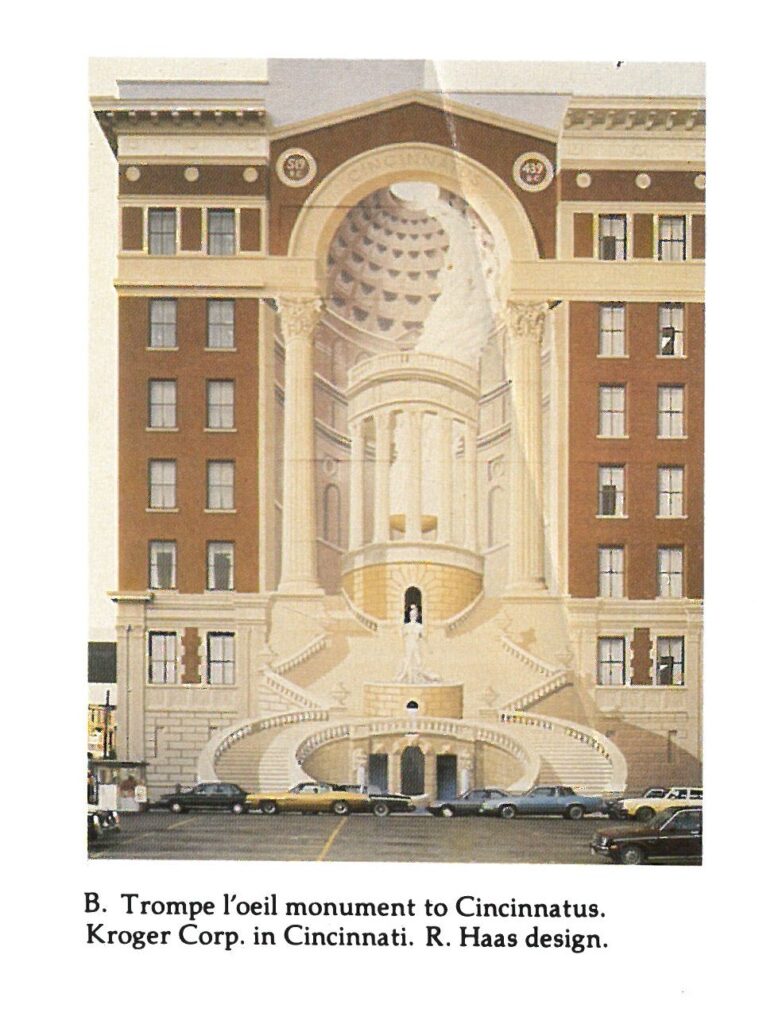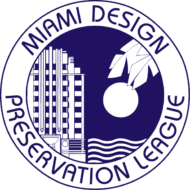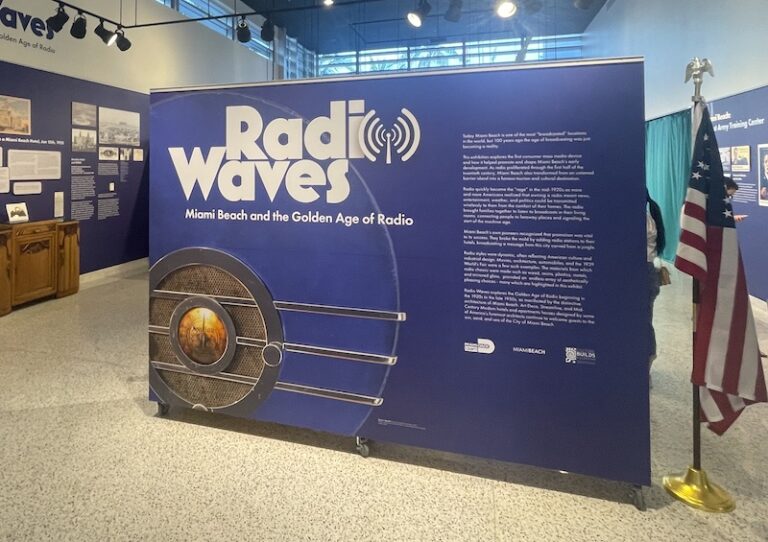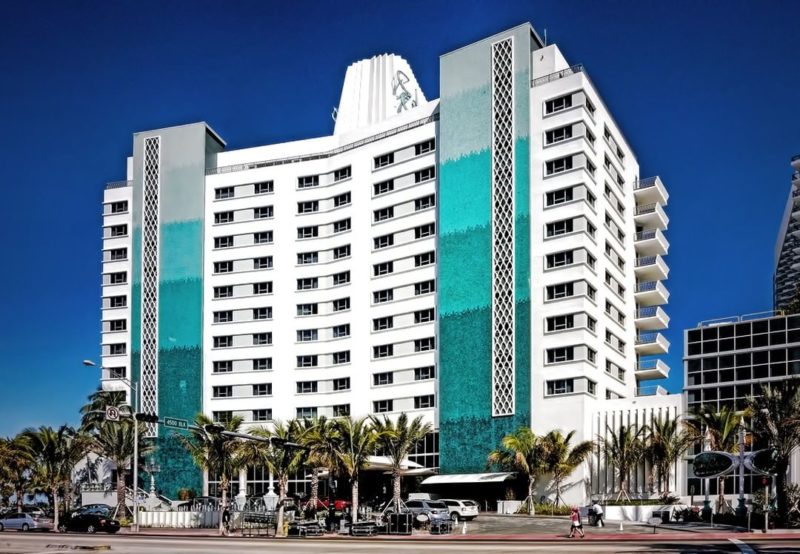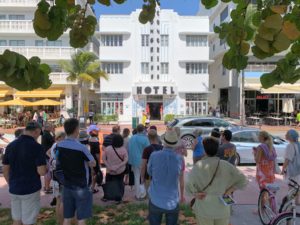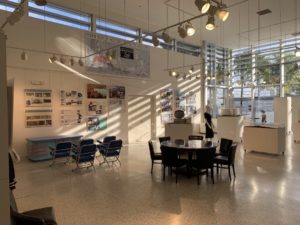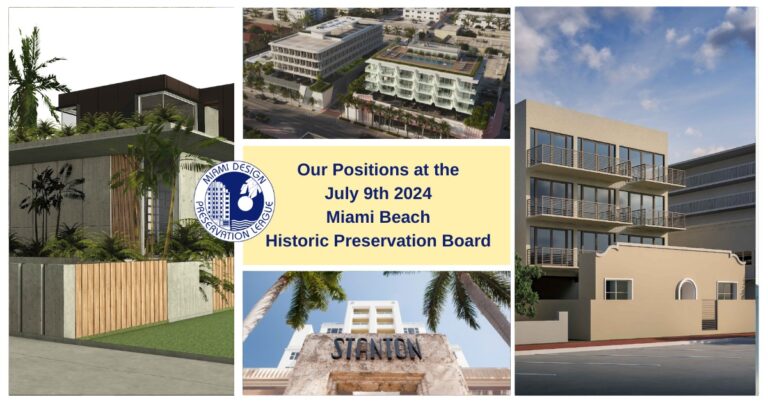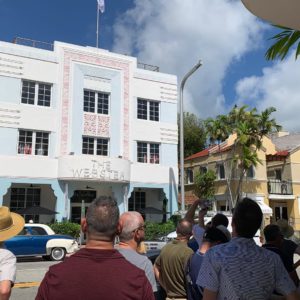If you happened to be driving up Collins Avenue during the years 1986-2002, you could not miss feeling awestruck at the sight of the massive eight-story colorful mural adorning the southern wall of the iconic Fontainebleau Hotel. The mural designed by artist Richard Haas became an icon itself, synonymous with the 1950s MiMo hotel. We recently had the opportunity to interview the artist about what his experience was like surrounding the creation of that mural.
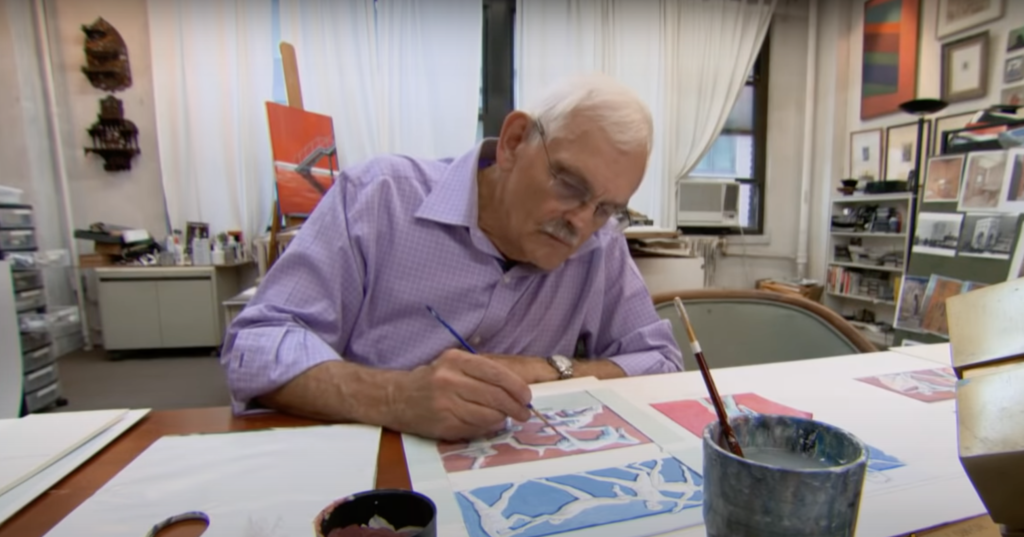
In 1977, Stephen Muss & Hilton Hotels took over the Fontainebleau Hotel. In 1985, through a series of connections, Richard Haas, well known at the time for painting architectural murals some called “trompe l’oeil” (French for “to trick the eye”) was chosen to come up with the design for the hotel’s mural. The design he came up with created the illusion that one could walk right through the image itself toward the Chateau building.

Haas, no stranger to Miami Beach, informed us, “In the early 80s, I had been painting a series of large watercolors depicting the Art Deco buildings. I remember meeting up with Barbara Baer Capitman and Leonard Horowitz at Wolfie’s Deli to discuss my artwork. A few years later, my wife and I flew down to Miami to meet with Stephen Muss for the first time. Surprisingly, he requested we meet him at a Playboy-esque Lounge, to discuss the particulars of the mural. There he outlined how the image needed to have in it not just the hotel, but the swimming pool with the grotto and waterfall. Muss made it very clear that he was in direct competition with real estate developer and art collector, Marty Margulies. At the time, Margulies was the developer of Grove Isle, an exclusive private island with condominium towers, in addition to owning hotels in Coconut Grove. He never mentioned the Eden Roc next door… apparently he didn’t have any need to compete with it.” Years later, Margulies also commissioned Haas to design a mural for the entrance of his Bakery Center Mall in South Miami. When it failed financially, Margulies sold the center to new owners, who eventually tore the mural down.
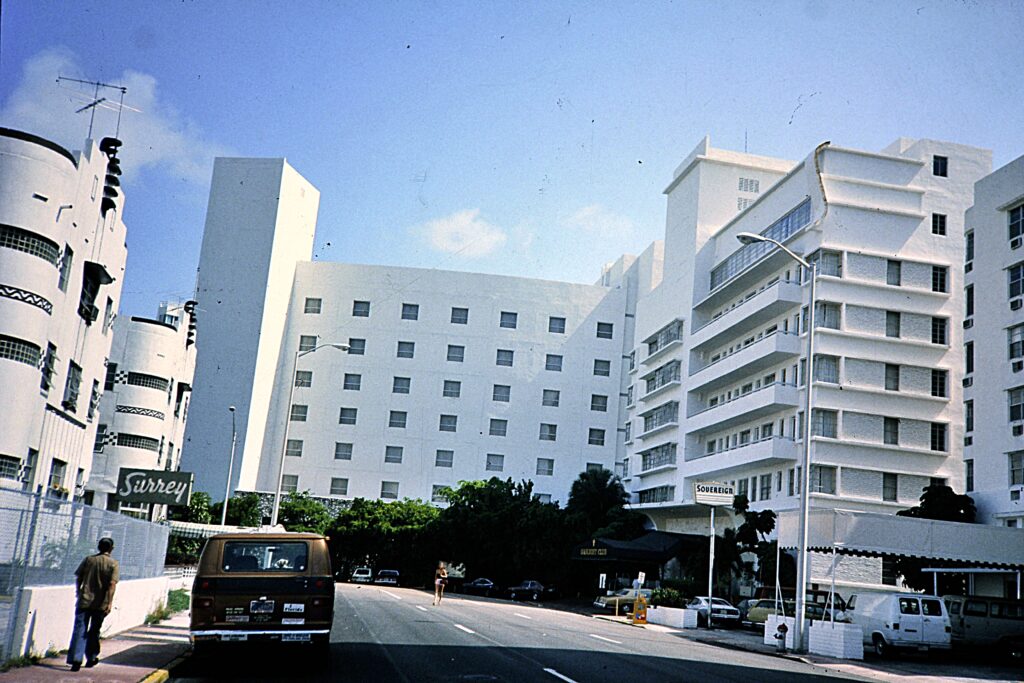
The Fontainebleau project required a team of five men and took two and a half months to complete. Four painters executed Haas’ designs on a platform 70 feet in the air. One held several giant stencils against the wall and another threw bags of graphite against it to leave a shadow outline of the sketch. A special paint was used called keim silicate, which is made with melted sand and a water based natural pigment. The addition of sand was used to effectively bond onto the concrete wall and prevent the colors from fading in the sun. The wall that was used had windows across on every floor. The artist told us, “I imagined that the windows were filled in with cement blocks and that they were able to do that because they were hallway windows, not in the hotel rooms which faced inwards toward the pool and the ocean.”
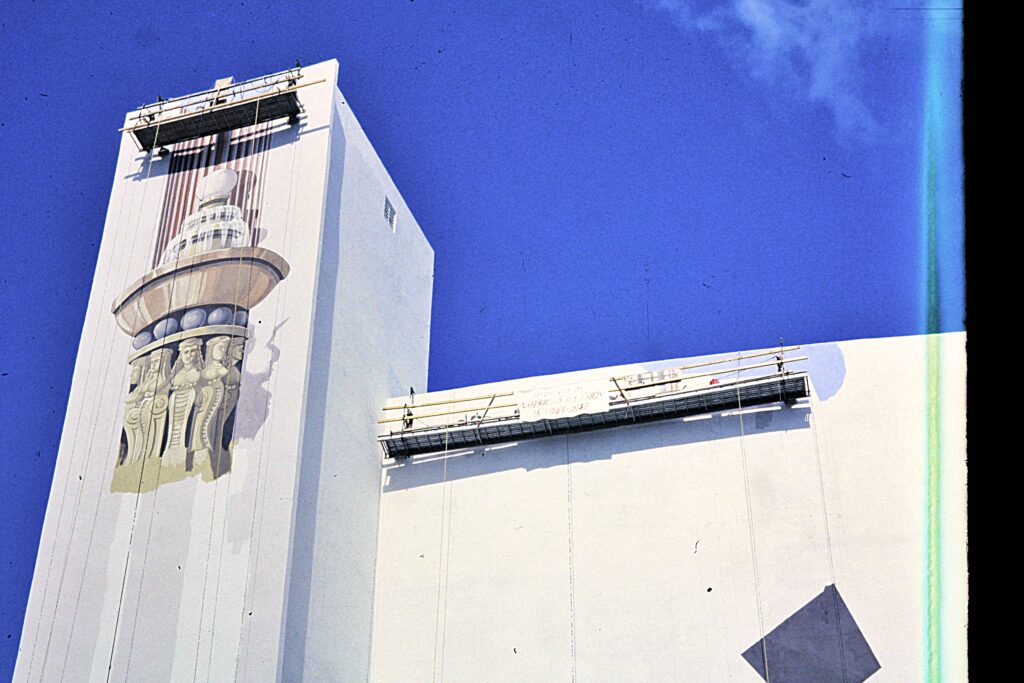
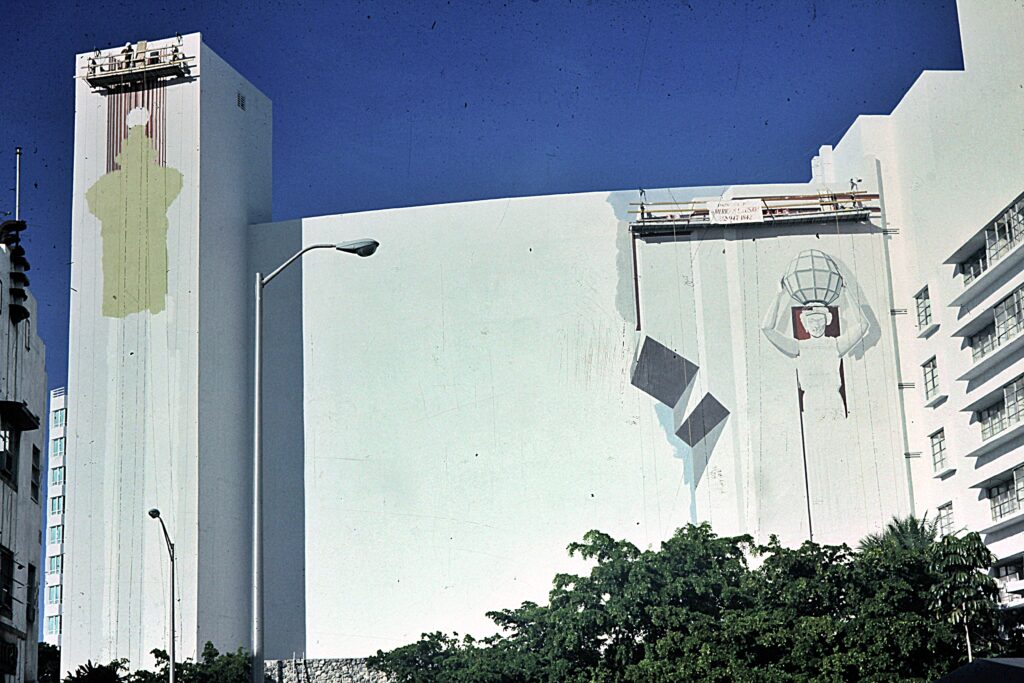
On March 6, 1986, a dedication ceremony was held commemorating the unveiling of the new mural. With Mayor Alex Daoud presiding, Haas was also present to be honored for his exquisite design. While involved in the project he had no idea what an attraction his mural would soon become to countless tourists as well as Miami beach locals. That mural would also be shown in several movies and T.V. series such as Married To The Mob and Miami Vice.
By 1997, the Muss Organization had the idea to add a 41-story tower to the property, with plans that included tearing down the famous mural, along with the frontage of the 49-year-old Sorrento Hotel. Activists like Randall Robinson, who was the preservation planner for the Miami Design Preservation League, demonstrated against the destruction of the 100-foot-high mural. Plans for its destruction dragged on for the next five years.
In 2002, Haas received a call from Stephen Muss requesting to fly him down to talk about either replicating the mural elsewhere at the hotel on a smaller scale, or creating an entirely new mural. Haas sadly remembered, “Once I was in Florida, Muss said the company decided against it, in part for financial reasons. I felt like I was duped into believing they wanted to work with me. In the end, I realized they flew me down just to appease the public and the press. At the time, there was a march planned opposing its demolition.” On November 5, 2002, the mural that was a symbol of Miami Beach to so many, was taken down.
Richard John Haas, best known for his architectural murals, is currently living in Yonkers, N.Y. and has a studio in New York City. For more than four decades, Haas has employed his extensive knowledge and skill through a multitude of media. His work has allowed the public to see urban environments in fresh and unique ways. He first became interested in architecture at an early age. When he was nineteen, he was an apprentice to his uncle who worked for Frank Lloyd Wright as his master stonemason. Later, he developed an interest in printmaking as an undergraduate student of art at the University of Wisconsin-Milwaukee. He created his first public mural in 1975, on a plain wall in New York City’s Soho neighborhood. His work has received numerous awards such as the American Institute of Architects Medal of Honor (1977), Guggenheim Fellowship (1983), National Endowment of Arts award (1987), Distinguished Alumnus Award University of Wisconsin-Milwaukee (1991), Jimmy Ernst award, American Academy of Arts and Letters, New York (2005).
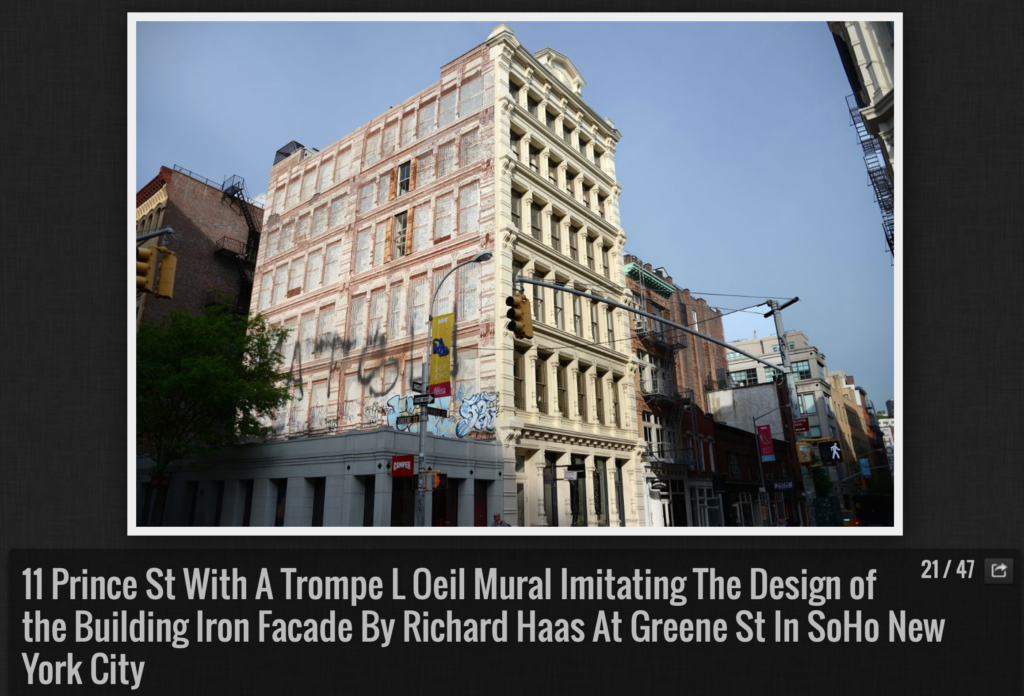
His work is also part of many permanent collections such as the American Academy of Art, New York, NY, Bass Museum of Art, Miami Beach, FL, Boston Museum of Fine Art, Boston, MA, Brooklyn Museum of Art, Brooklyn, NY, California Palace of the Legion of Honor, San Francisco, CA, Metropolitan Museum of Art, New York, NY, Museum of Modern Art, New York, NY, National Academy of Design, New York, NY and the Smithsonian Institution, Washington, D.C.
